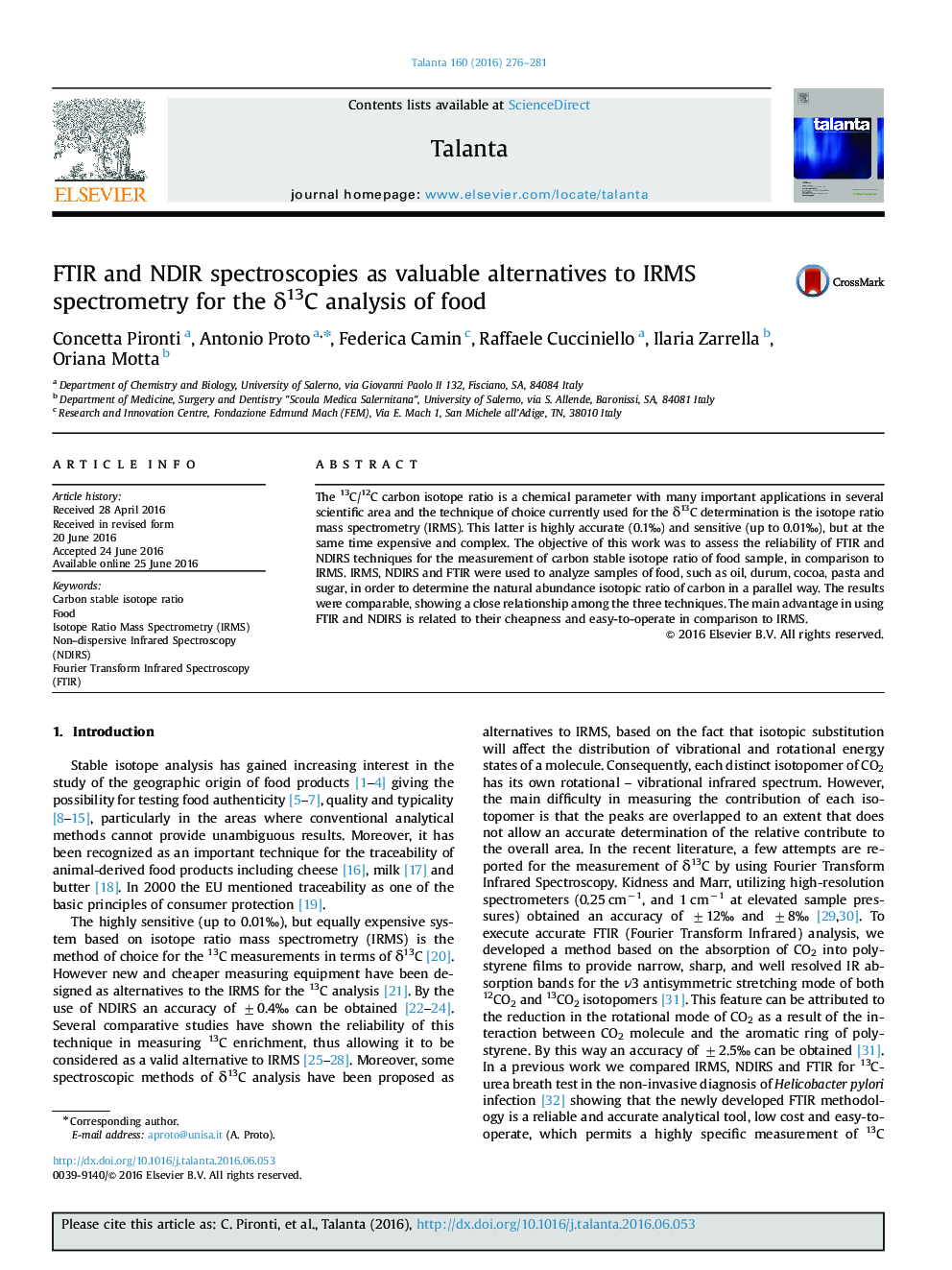| Article ID | Journal | Published Year | Pages | File Type |
|---|---|---|---|---|
| 1243258 | Talanta | 2016 | 6 Pages |
•Application of NDIRS and FTIR for the isotopic characterization of food.•Statistical analysis reveal a robust correlation among the three investigated techniques.•NDIRS and FTIR enhance the choice of techniques useful for δ13C analysis of food.
The 13C/12C carbon isotope ratio is a chemical parameter with many important applications in several scientific area and the technique of choice currently used for the δ13C determination is the isotope ratio mass spectrometry (IRMS). This latter is highly accurate (0.1‰) and sensitive (up to 0.01‰), but at the same time expensive and complex. The objective of this work was to assess the reliability of FTIR and NDIRS techniques for the measurement of carbon stable isotope ratio of food sample, in comparison to IRMS. IRMS, NDIRS and FTIR were used to analyze samples of food, such as oil, durum, cocoa, pasta and sugar, in order to determine the natural abundance isotopic ratio of carbon in a parallel way. The results were comparable, showing a close relationship among the three techniques. The main advantage in using FTIR and NDIRS is related to their cheapness and easy-to-operate in comparison to IRMS.
Graphical abstractFigure optionsDownload full-size imageDownload as PowerPoint slide
